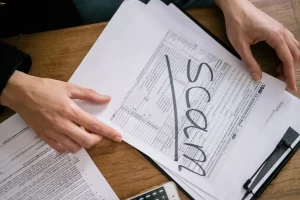- Economy & Budget
Fixed and Variable Expenses: How to Manage Them Effectively

Understanding the difference between fixed and variable expenses is essential for maintaining a healthy financial life. Managing these two types of expenses properly can help you budget better, save more, and avoid unnecessary debt.
In this guide, we’ll explore what fixed and variable expenses are, examples of each, and strategies to manage them effectively.
1. What Are Fixed Expenses?
Fixed expenses are costs that remain consistent each month. These expenses are necessary for maintaining your standard of living and do not fluctuate frequently.
📌 Examples of Fixed Expenses:
- Rent or mortgage payments
- Car loan payments
- Insurance (health, auto, home)
- Internet and phone bills
- Subscription services (Netflix, gym memberships)
✅ Key Characteristics:
✔ Predictable and easy to plan for
✔ Paid on a regular schedule (monthly, quarterly, annually)
✔ Less flexible but often negotiable (e.g., insurance or phone plans)
🚀 Example: If your rent is $1,200 per month, it remains the same unless there’s a lease change.
2. What Are Variable Expenses?
Variable expenses change depending on your lifestyle and consumption habits. These costs fluctuate each month, making them harder to predict.
📌 Examples of Variable Expenses:
- Groceries
- Eating out at restaurants
- Entertainment (movies, concerts, events)
- Utility bills (electricity, water, gas)
- Gasoline or public transportation costs
- Shopping for clothes or personal items
✅ Key Characteristics:
✔ Can be adjusted based on spending habits
✔ Often influenced by lifestyle choices
✔ Some are necessary (groceries, utilities), while others are discretionary (entertainment, shopping)
🚀 Example: Your electricity bill might be $80 in the summer but $150 in the winter due to heating costs.
3. Why It’s Important to Differentiate Between Fixed and Variable Expenses
Knowing which expenses are fixed and which are variable helps you:
💡 Create a better budget – You’ll know which costs are unavoidable and which can be adjusted.
💡 Cut unnecessary expenses – You can reduce spending in variable categories when needed.
💡 Plan for financial emergencies – Understanding your fixed costs helps you determine how much you need in an emergency fund.
🚀 Example: If you suddenly lose your job, fixed expenses remain (like rent), but variable expenses can be reduced (like dining out).
4. How to Manage Fixed Expenses Effectively
Since fixed expenses are unavoidable, the key is to optimize them to avoid overspending.
✅ Tips to Reduce Fixed Expenses:
- Negotiate bills – Call your internet or phone provider for a better deal.
- Refinance loans – Consider refinancing your mortgage or car loan to lower monthly payments.
- Review subscriptions – Cancel unused memberships or switch to cheaper alternatives.
- Choose affordable housing – If rent is too high, consider moving to a more budget-friendly location.
🚀 Example: Negotiating a $20 monthly discount on your internet bill saves $240 per year!
5. How to Manage Variable Expenses Effectively
Unlike fixed expenses, variable expenses can be controlled with smart financial habits.
✅ Tips to Reduce Variable Expenses:
- Set a spending limit – Decide how much you’ll spend on groceries, dining, and entertainment.
- Use cash instead of credit cards – Helps prevent impulse purchases.
- Look for discounts and cashback – Use apps like Honey, Rakuten, or Fetch Rewards.
- Plan meals and grocery shop wisely – Avoid waste and overspending.
- Cut back on luxuries – Reduce non-essential spending when needed.
🚀 Example: Meal prepping instead of eating out three times a week could save you $150+ per month!
6. The 60/20/20 Rule for Balancing Fixed and Variable Expenses
A simple budgeting rule to manage expenses is the 60/20/20 rule:
✔ 60% for fixed expenses (rent, bills, loans)
✔ 20% for savings and investments (retirement, emergency fund)
✔ 20% for variable expenses (entertainment, dining, shopping)
🚀 Example: If your income is $3,500 per month, your budget might look like this:
- $2,100 (60%) for fixed expenses
- $700 (20%) for savings
- $700 (20%) for variable expenses
If your fixed costs are too high, consider adjusting by reducing housing costs, loan payments, or subscription services.
7. When to Adjust Fixed and Variable Expenses
Life circumstances change, and your expenses should adapt accordingly.
🔹 Reduce Fixed Expenses If:
- You experience a pay cut or job loss.
- You’re saving for a major financial goal.
- You realize you’re overpaying for rent, insurance, or loans.
🔹 Reduce Variable Expenses If:
- You need to save money quickly.
- You have unexpected costs (medical bills, car repairs).
- You notice unnecessary spending habits (too many takeout meals, excessive shopping).
🚀 Example: If you’re saving for a vacation, reduce entertainment and shopping expenses for a few months.
8. How to Prepare for Unexpected Expenses
Even with great budgeting, unexpected expenses can arise. The best way to stay prepared is by building a financial cushion.
✅ Ways to Prepare:
- Keep at least 3-6 months of fixed expenses in an emergency fund.
- Set aside money for seasonal variable costs (holiday shopping, increased electricity bills).
- Use a separate savings account for irregular expenses like car repairs or medical bills.
🚀 Example: If your monthly fixed expenses are $1,500, aim to save at least $4,500 to $9,000 in your emergency fund.
Final Thoughts
Managing fixed and variable expenses effectively is the key to achieving financial stability and building wealth.
✔ Fixed expenses are predictable but can be optimized.
✔ Variable expenses fluctuate but can be controlled.
✔ Smart budgeting techniques help balance both and increase savings.
🚀 The better you manage your expenses, the more financial freedom you’ll have!






